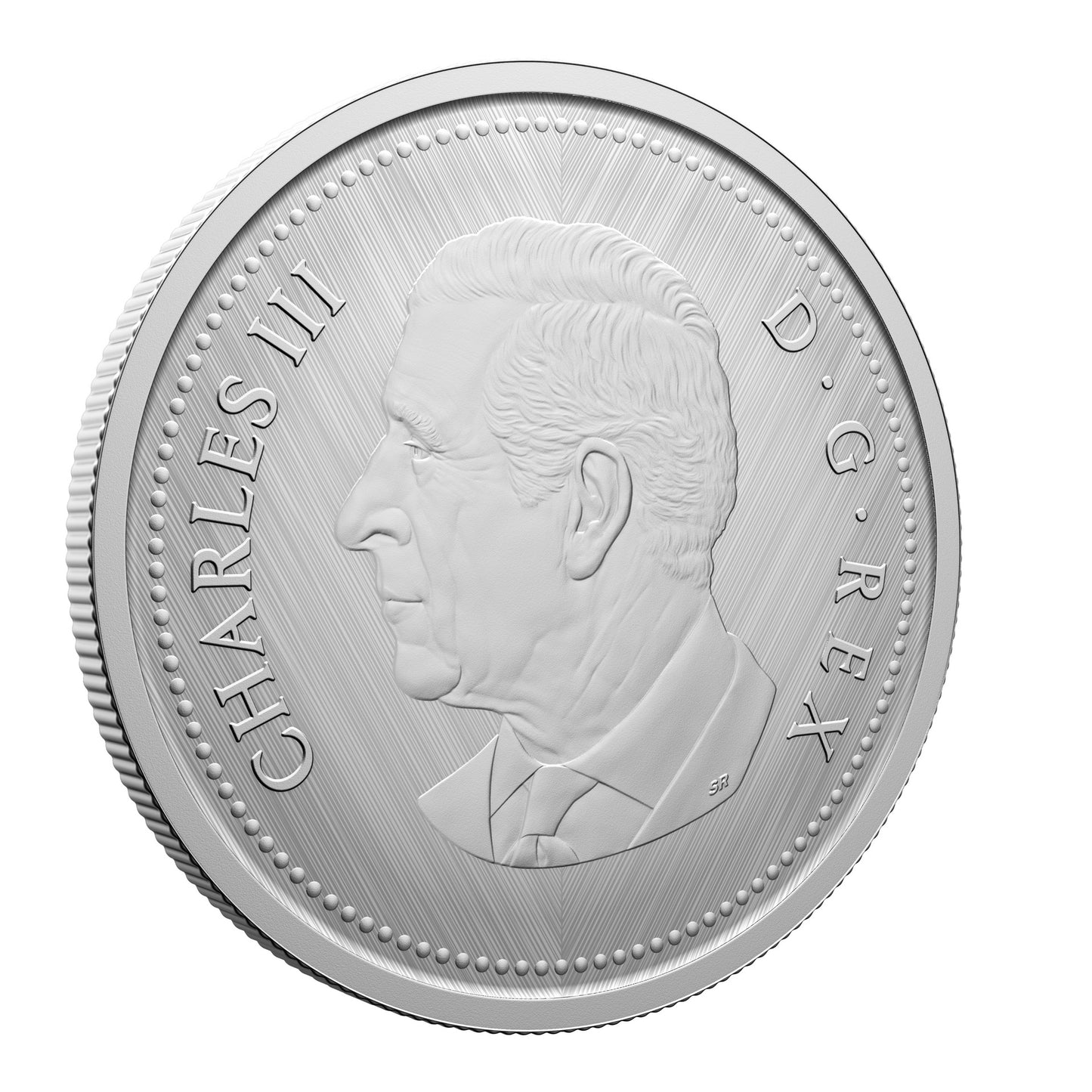
Search
Popular search:

Popular search:







Tribute: W Mint Mark – 1 oz. Fine Silver Coin – Mintage: 7,500 (2025)
Our Tribute: W Mint Mark series ends with a national symbol.
Canada’s smallest-value circulation coin features a reverse design that packs a lot of history into one image! In 2025, Castor canadensis celebrates its 50th anniversary as an official symbol of Canadian sovereignty, though the beaver’s connection to this land goes deeper: as a commodity, its fur made it an integral part of early Canadian history; and as a cultural icon, its likeness has appeared on everything from heraldic bearings to the first Canadian postage stamp. However, few depictions of the beaver are as iconic as George Edward Kruger Gray’s conception, seen here on this “minted in Winnipeg” coin that brings our popular Tribute: W Mint Mark series to a close.
Last coin in our “minted in Winnipeg” series.
SPECIAL FEATURES
Struck in Winnipeg: Castor canadensis on a coin
The coin affectionally dubbed the “nickel” – despite the fact that the element is no longer the main material found in the coin – has been struck at our Winnipeg facility since it opened in 1976. In that time (1976-2025), G.E. Kruger Gray’s beaver has enjoyed a nearly uninterrupted run on the five-cent piece, yielding only to the 60th anniversary of the Victory Nickel commemoration in 2005 and the 150th anniversary of Confederation in 2017, when Canada’s circulation coins all bore special themed designs for Canada’s sesquicentennial – and all were proudly struck in Winnipeg.
DESIGN
A numismatic tribute to Canada’s five-cent circulation piece, this all-silver coin’s reverse features George Edward Kruger Gray’s classic beaver design, along with the “W” (Winnipeg) mint mark denoting where this coin was struck. The obverse features the effigy of His Majesty King Charles III by Canadian artist Steven Rosati.
DID YOU KNOW?
Seen here, Kruger Gray’s beaver design was originally intended for the 10-cent piece, but a more detailed version of it made its way onto the five-cent coin instead. As for his original five-cent coin concept, it ended up on a different denomination, too: the cent or penny, which featured Kruger Gray’s “two maple leaves on a sprig” design until 2012, when the penny was withdrawn from circulation in 2012.
Used for manufacturing waterproof hats, beaver pelts were fundamental to the economy of New France in the 17th and 18th centuries, and they continued to be in heavy demand until the mid-19th century. While the fur trade built Canada, it also resulted in the near extinction of the industrious beaver, which has since made a comeback across Canada.
The beaver became an official symbol of Canada on March 24, 1975, when the National Symbol of Canada Act (an Act to provide for the recognition of the Beaver (Castor canadensis) as a symbol of the sovereignty of Canada) received royal assent.
PACKAGING
Your coin is encapsulated and presented in a black Royal Canadian Mint-branded clamshell with a black beauty box.